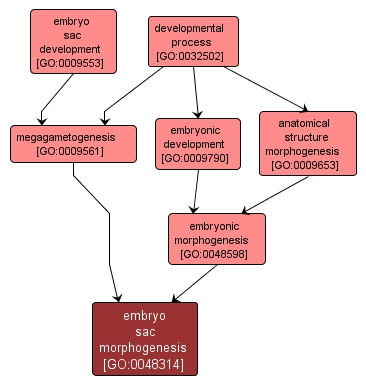GO TERM SUMMARY
|
| Name: |
embryo sac morphogenesis |
| Acc: |
GO:0048314 |
| Aspect: |
Biological Process |
| Desc: |
The process by which the anatomical structures of the embryo sac are generated and organized. Morphogenesis pertains to the creation of form. The embryo sac develops from the megaspore in heterosporous plants. |
Synonyms:
- female gametophyte morphogenesis
|
|

|
INTERACTIVE GO GRAPH
|














